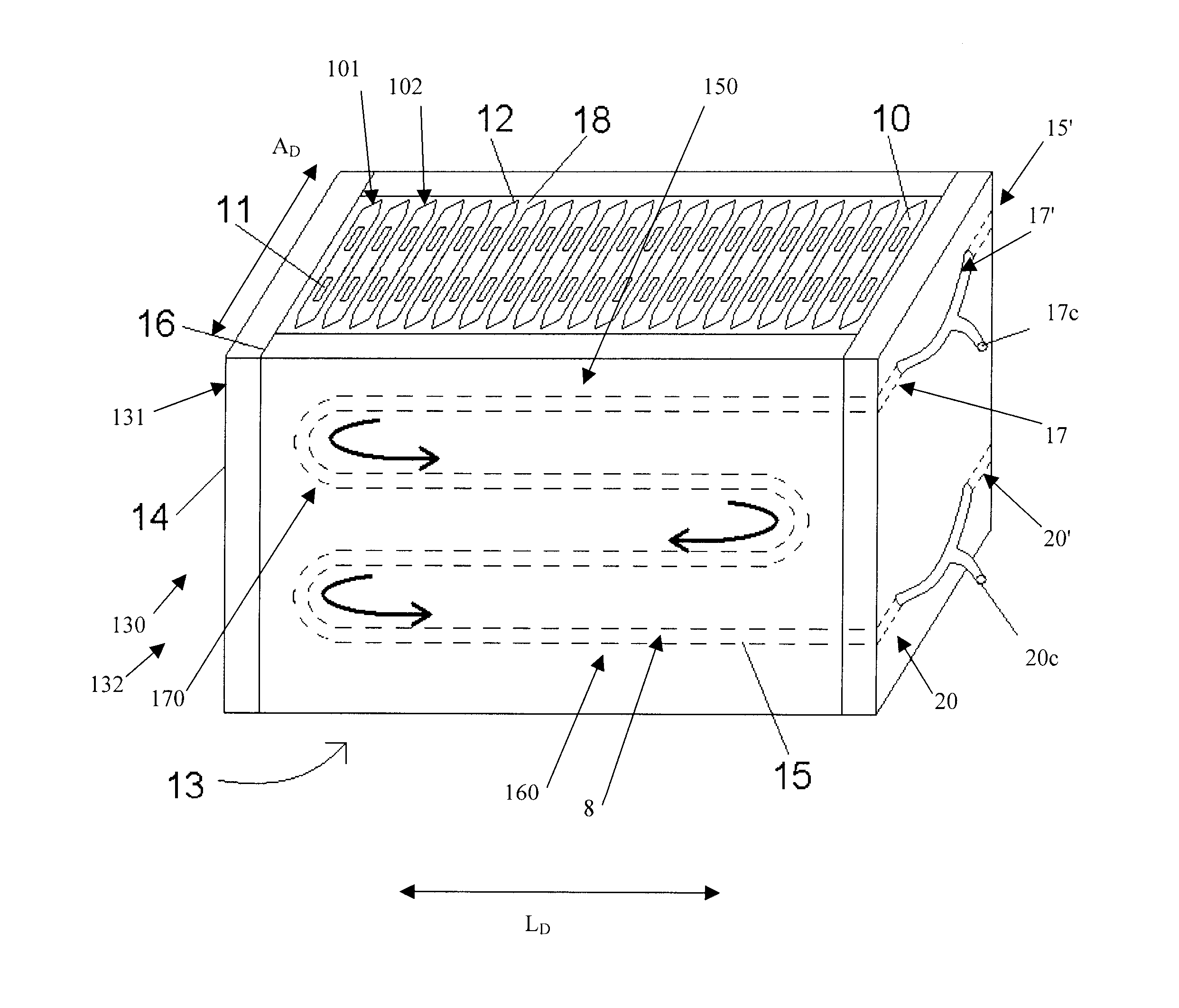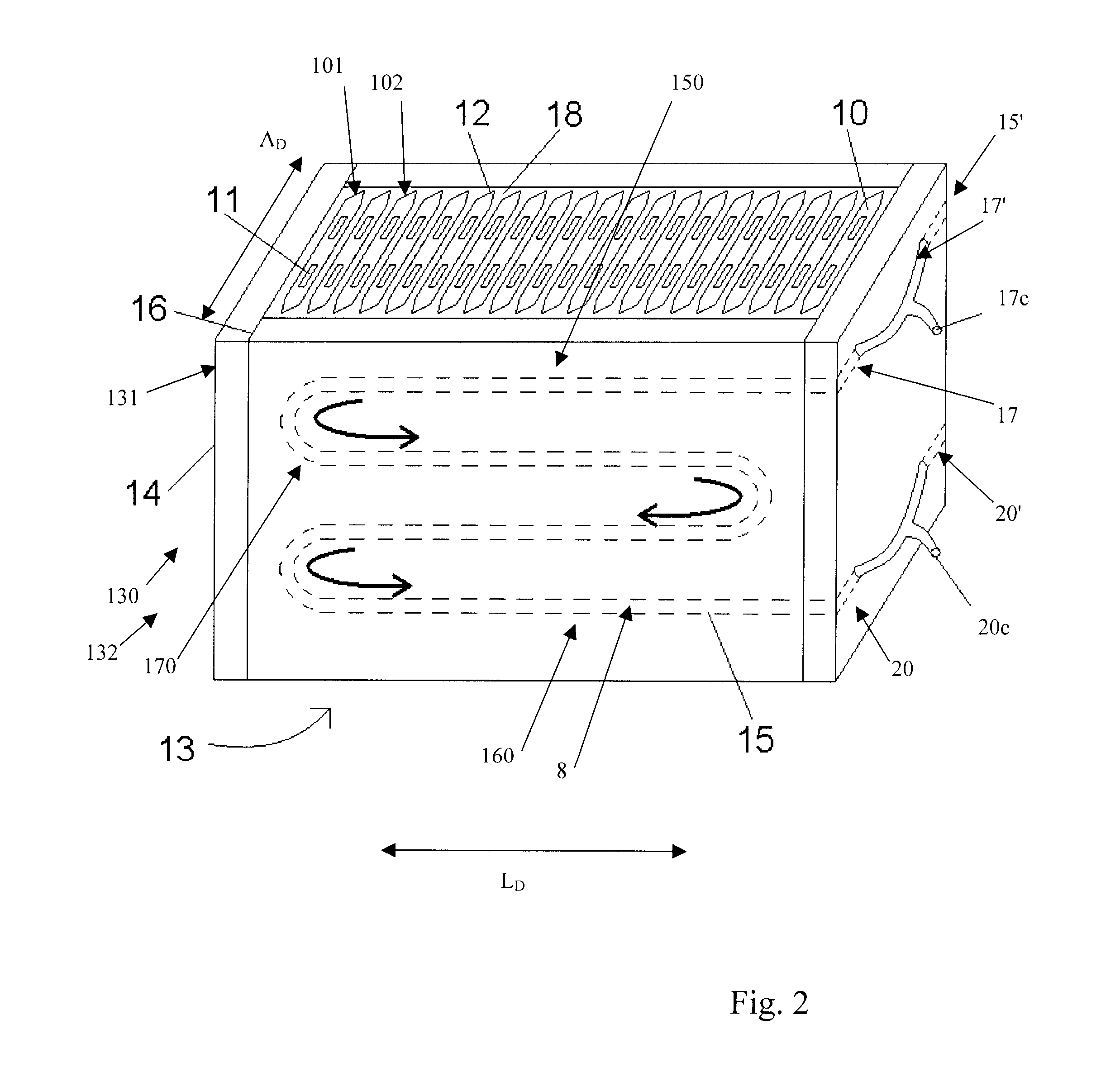Fluid-cooled battery module containing battery cells
a battery module and flue-cooled technology, applied in the field of battery modules, can solve the problems of low heat capacity, low thermal conductivity of air, unsatisfactory affecting the functioning and lifespan of a battery system,
- Summary
- Abstract
- Description
- Claims
- Application Information
AI Technical Summary
Benefits of technology
Problems solved by technology
Method used
Image
Examples
Embodiment Construction
[0025]Preferred embodiments of the invention and its advantages can be understood by referring to the present drawings. In the present drawings, like numerals are used for like and corresponding parts of the accompanying drawings.
[0026]As illustrated in FIG. 1, in one embodiment of the present invention, one, and preferably a plurality of battery cells, shown generally by reference numeral 10, are contained within a battery module, shown generally by reference numeral 130. The battery module 130 preferably is formed of a battery module case 13, as shown in FIGS. 1 and 2. In a preferred embodiment, the battery module case 13 is preferably in the shape of a rectangular prism, having two longer sides along a longitudinal direction LD and two shorter sides along a lateral direction AD. The longer sides, in a preferred embodiment, are formed by cooling plates, as shown generally by reference numeral 16, and the two shorter sides in a preferred embodiment are formed by the end plates, 14....
PUM
 Login to View More
Login to View More Abstract
Description
Claims
Application Information
 Login to View More
Login to View More - R&D
- Intellectual Property
- Life Sciences
- Materials
- Tech Scout
- Unparalleled Data Quality
- Higher Quality Content
- 60% Fewer Hallucinations
Browse by: Latest US Patents, China's latest patents, Technical Efficacy Thesaurus, Application Domain, Technology Topic, Popular Technical Reports.
© 2025 PatSnap. All rights reserved.Legal|Privacy policy|Modern Slavery Act Transparency Statement|Sitemap|About US| Contact US: help@patsnap.com



